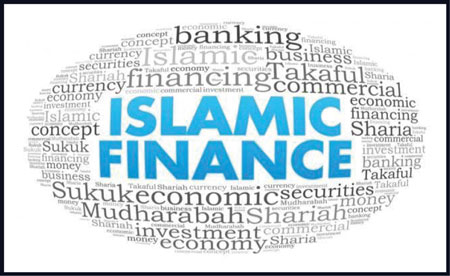Stronger economic growth in core Islamic finance countries is expected to boost industry assets about 10 per cent from 2022 to 2023.
The global Islamic finance industry continued to expand in 2021, with assets up 10.2 per cent, versus 11.4 per cent in 2020 (excluding Iran), supported by banking asset growth. The increase last year was supported by Islamic banking assets in some GCC countries and Malaysia, sukuk issuances exceeding maturities and the solid performance of the Islamic funds industry.
This year, higher commodity prices are expected to underpin a stronger recovery in many core Islamic finance markets.
Moreover, most of these countries are relatively resilient to macroeconomic shocks resulting from the Russia-Ukraine conflict. This will support the industry’s prospects for 2022-2023. However, global headwinds could change the picture by continued stubbornly high inflation, lockdowns related to Covid-19, and the US Federal Reserve and other major central banks ramping up their fight to rein in the inflation.
Faster bank growth is also expected to contribute to the industry expansion. With the more supportive economic outlook for many Islamic finance countries, bank financing growth is expected to accelerate.
In Saudi Arabia, continued mortgage demand and the implementation of Vision 2030 projects will create opportunities for industry expansion. In other GCC countries, more positive economic sentiment, government spending and investments will help accelerate growth.
In South-East Asia, we expect the $290 billion Islamic banking market to expand at a compound annual growth rate of about 8 per cent over the next three years.
In 2022, we expect a decline in the total sukuk issuance compared with a stabilisation at $147.4bn in 2021, versus $148.4bn in 2020, and the 105 per cent increase in foreign-currency-denominated issuance over the same period.
There are several factors at play. Shrinking global liquidity and increasing complexity related to regulatory standards are likely to hold back sukuk issuance in 2022, assuming any adverse Covid-19-related disruption in core Islamic finance countries remains in check.
We also expect lower financing needs for some core Islamic finance countries and some corporates to remain prudent with their growth capital expenditure after slowly recovering from the pandemic.
At the same time, a more supportive economic environment and government spending are likely to create opportunities in commodity exporting countries. Moreover, local currency issuances by some governments are likely to continue as they seek to develop local capital markets and offer alternative financing avenues to their economies.
We note the total volume of issuance was down 23.2 per cent and foreign currency denominated issuance increased 12.3 per cent in the first quarter of 2022, after some issuers frontloaded their plans to benefit from market conditions prior to interest rate rises.
Many of these issuances were either from low-rated counter parties or in the form of capital-boosting instruments. Despite the decline in volumes, we expect sukuk issuance to still exceed sukuk maturing in 2022, which we estimate at about $96bn.
Although their contribution to the industry remains small, we also expect the takaful and fund sectors to expand this year. We continue to see the takaful sector expanding at an annual rate of 5 per cent to 10 per cent. Fund growth is less certain due to market dislocations since the beginning of 2022, with one-quarter of the industry equity funds and another 60 per cent money market or sukuk funds that are likely to suffer from higher global interest rates.
We also see opportunities in the alignment of certain Islamic financial products and environmental, social and governance (ESG) factors. We expect to see a higher volume of green and sustainability sukuk (from a low base) as issuers look to broaden the investor base and include funds aligned with sustainability themes.
Many Islamic finance countries are exposed to climate transition risk, and several are developing or implementing transition strategies, including significant investment in clean energy. These present real opportunities for sustainable sukuk in Islamic finance core countries.
However, the energy transition is expected to take a long time to materialise in the GCC and Malaysia, and as such sporadic recourse to green sukuk.
The social angle of Islamic finance presents another opportunity for sustainable sukuk. As the economic effects of the pandemic continue to surface in the form of higher unemployment rates, especially in fiscally constrained countries, social sukuk can help amortise the shock. These and other Islamic finance instruments could have an even bigger effect if they are leveraged properly.— The National










